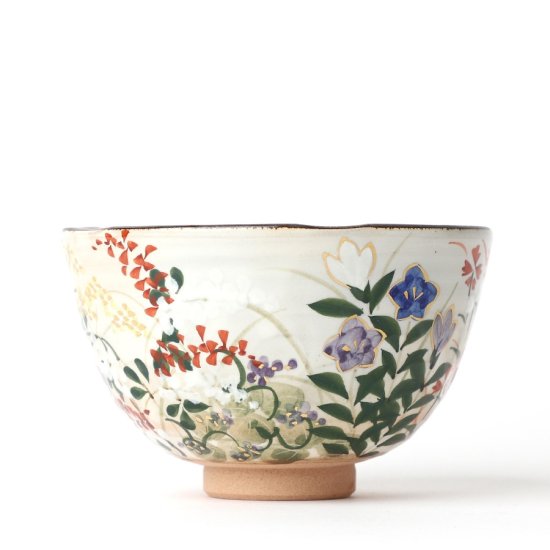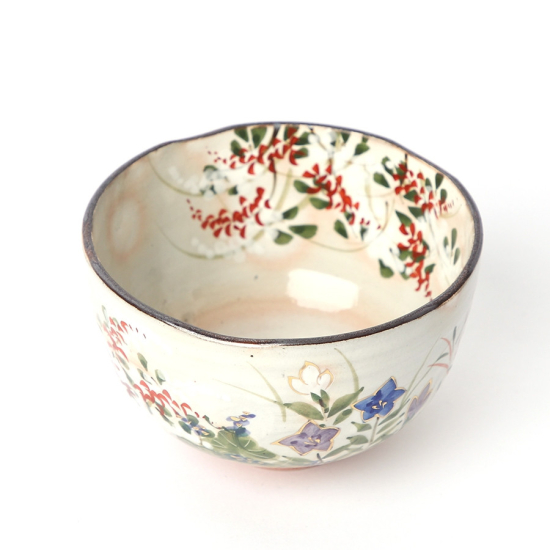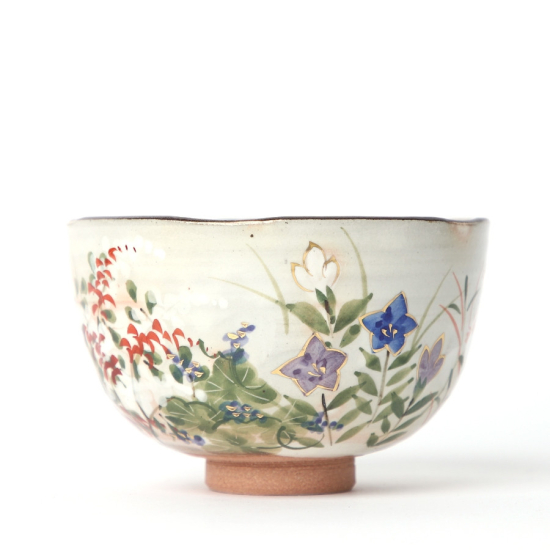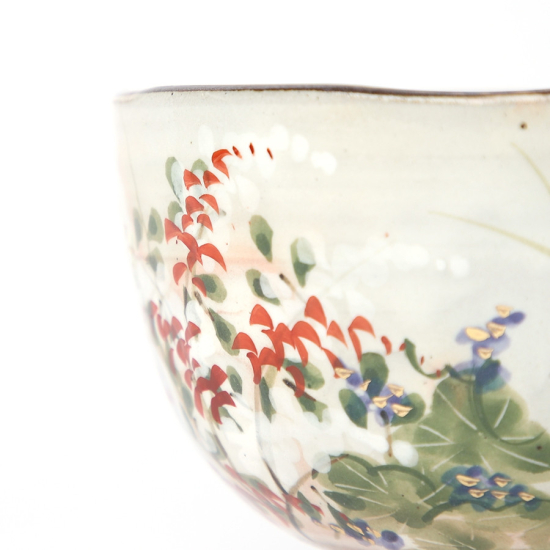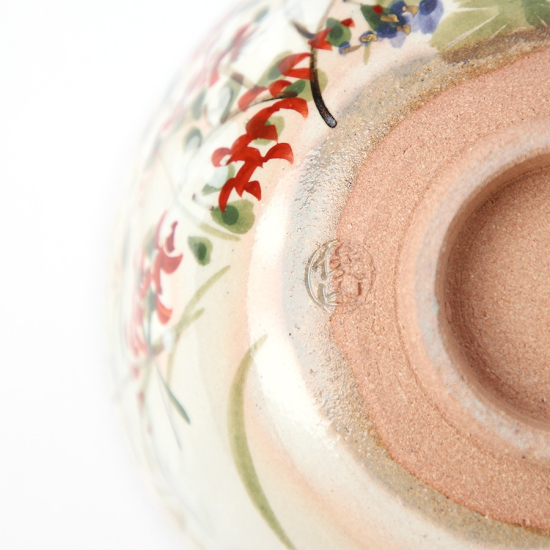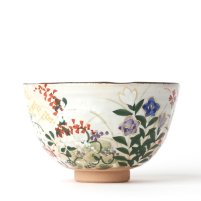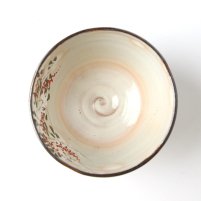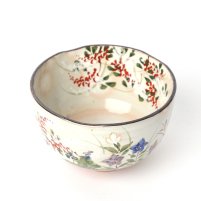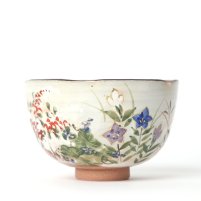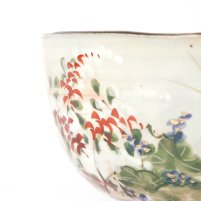Kyo-yaki 京焼 / Kiyomizu-yaki 清水焼
Both Kyo- and Kiyomizu-yaki are general terms, often used together or interchangeably, which refer to pottery produced in Kyoto, representing a variety of different styles. Historically Kiyomizu-yaki exclusively referred to pottery made on the road leading up to the ancient Kiyomizu Temple – now a UNESCO World Heritage site. Typical Kyoto wares are decorated with colourful hand-painted motifs using overglaze enamel pigments: a technique that appeared in the 17th century and is still a hallmark of Kyo-yaki today. From 794 to 1603 Kyoto was the imperial capital, attracting the most skilled artisans across the country. Even after the seat of government moved to Edo, present day Tokyo, Kyoto continued to be the cultural and spiritual centre of Japan.



